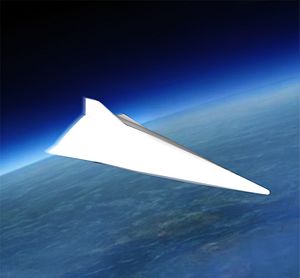A new RAND study has detailed the threat posed by the development and diffusion of hypersonic weapons, and has proposed a solution: multilateral arms control. The report, authored by Richard Speier, George Nacouzi, Carrie A. Lee, and Richard M. Moore, sets out the technical challenges and implications provided by hypersonics, and from these develops strategic implications regarding the most appropriate international response.
Hypersonics pose a threat to states that rely upon a robust, integrated defense against ballistic missiles. Against states without these defenses, they pose a threat no more significant than that of conventional cruise or ballistic missiles. Given that with the current capabilities of fielded missile defense systems, no state enjoys a robust, integrated defense against ballistic missiles, the threat posed by hypersonics is necessarily future oriented. Essentially, hypersonics restore the threat that anti-ballistic missile systems were intended to alleviate.
Hypersonics also exacerbate the threat posed by traditional cruise and ballistic missiles, although through an increase in degree of threat rather than in kind. Extant tactical surface-to-air missile defense struggle to handle the threat posed by hypersonics, as these approach targets at great speed and with unusual flight profiles.
Hypersonics do not fundamentally transform the deterrent relationships between China, the United States, and Russia, although they have a marginal impact on the utility of particular weapons. The more important question is how far such weapons might spread; Europe, India, Australia, and Japan have already taken exploratory steps towards hypersonic development. In the hands of smaller, less friendly countries, hypersonics could affect the ability of the United States to intervene at manageable risk.
But while much open research on hypersonic technologies is part of the public domain, and thus accessible to would-be proliferators, hypersonics are sufficiently far on the technological frontier that not every state can develop them. But even proliferation among first and second tier powers would potentially create instability, and certain third tier states might well invest sufficiently to acquire hypersonic capabilities down the road (although whether such states could manage the ISR demands that make such weapons useful is different question).
The solution proposed by the report is to establish an arms control regime around hypersonic technology, which would prevent the diffusion of such technology around the world. Acting along the same principles as the Nuclear Non-Proliferation Treaty and the Missile Technology Control Regime, an agreement would prevent direct transfer of systems, as well as transfer of technologies associated with the development of such weapons. In effect, this would enable the great powers (in this case Russia, China, the United States, and perhaps the European Union) to monopolize hypersonic capabilities, and prevent smaller states from posing the same threat that they pose to each other.
Thus, this regime would primarily benefit those states which already possessed the requisite technology to develop and deploy hypersonic weapons, at the expense of states forced to rely on less capable cruise and ballistic missile systems. Given this, it is certainly possible to imagine an accord on the limitation of technology diffusion, as long as all of the member states understood the threat of destabilization in the same way.
Over a decade ago, the U.S. defense establishment gave broad support to the Bush administration’s decision to withdraw from the Anti-Ballistic Missile Treaty, an accord designed to prevent escalatory arms races by banning defensive weapons. Ironically, the threat posed by hypersonics simply returns the world to the status quo, needing multilateral arms control in order to manage concerns about escalation and diffusion. It is also ironic that the hypersonics, which only have a transformative strategic impact when used against states that deploy advanced missile defense systems, are likely to come online before any state has deployed an advanced, reliable missile defense system.
Nevertheless, efforts at limiting the diffusion of hypersonic technology are almost certainly worthwhile; accelerating crisis decision-making doesn’t help anyone. The question is whether China, and particularly Russia, believe that they have an interest in preventing the destabilization of the global military balance. The answer to this question is not yet obvious.































